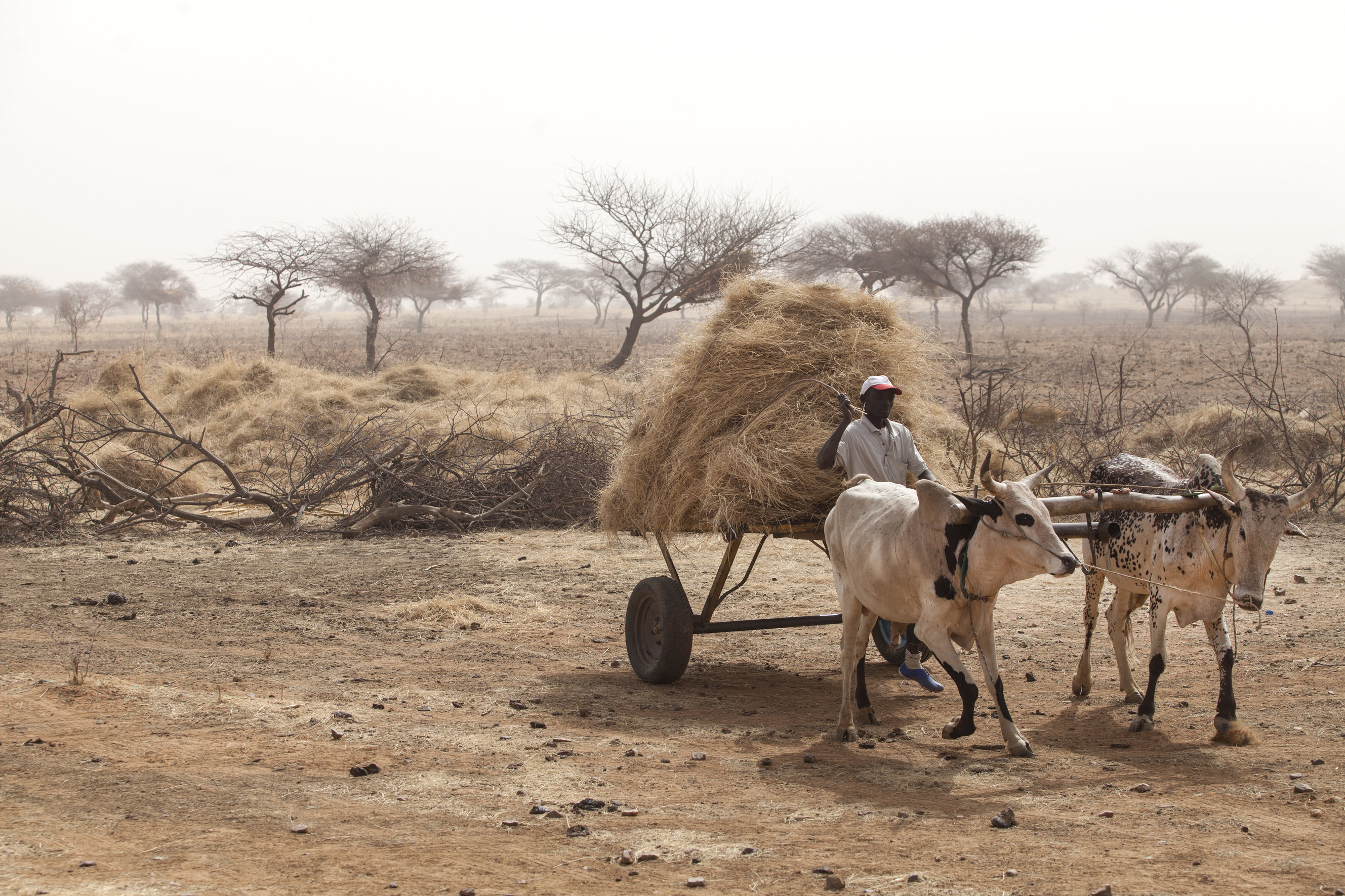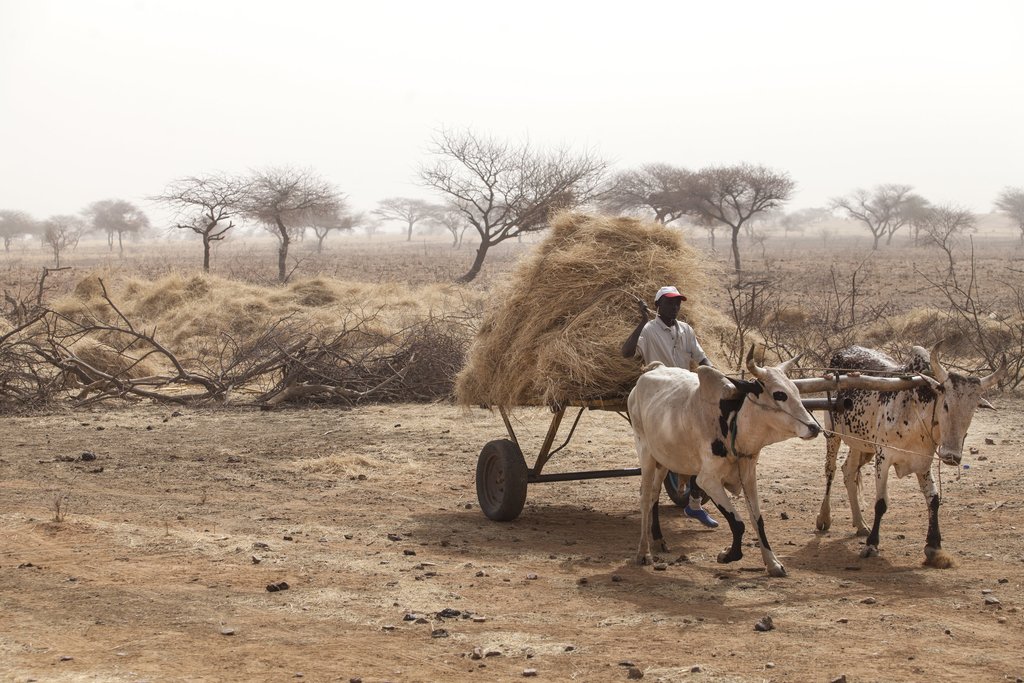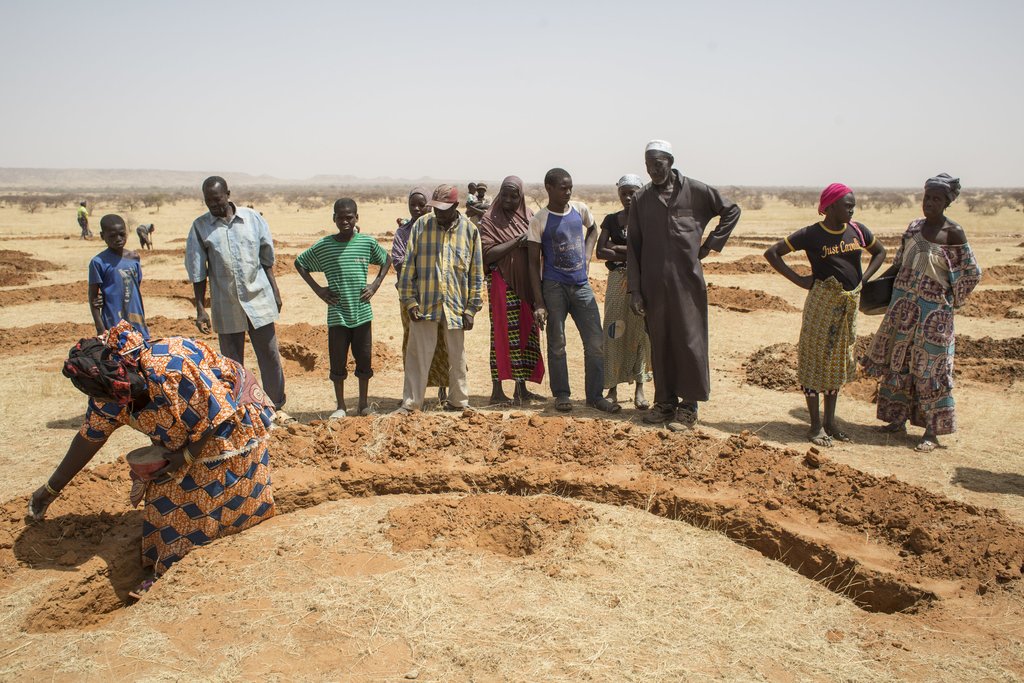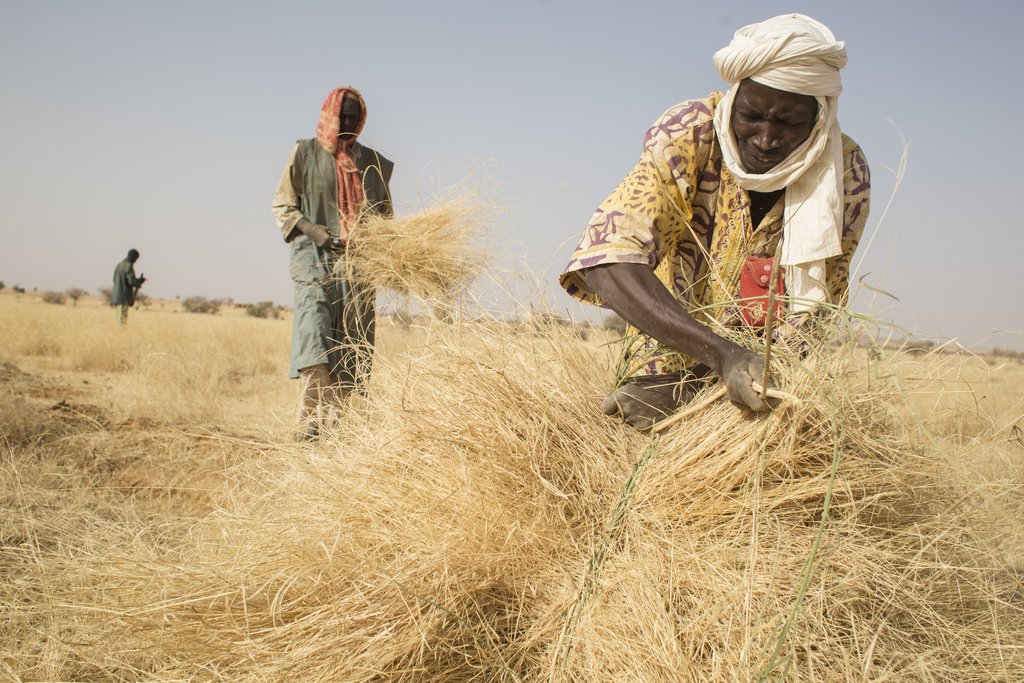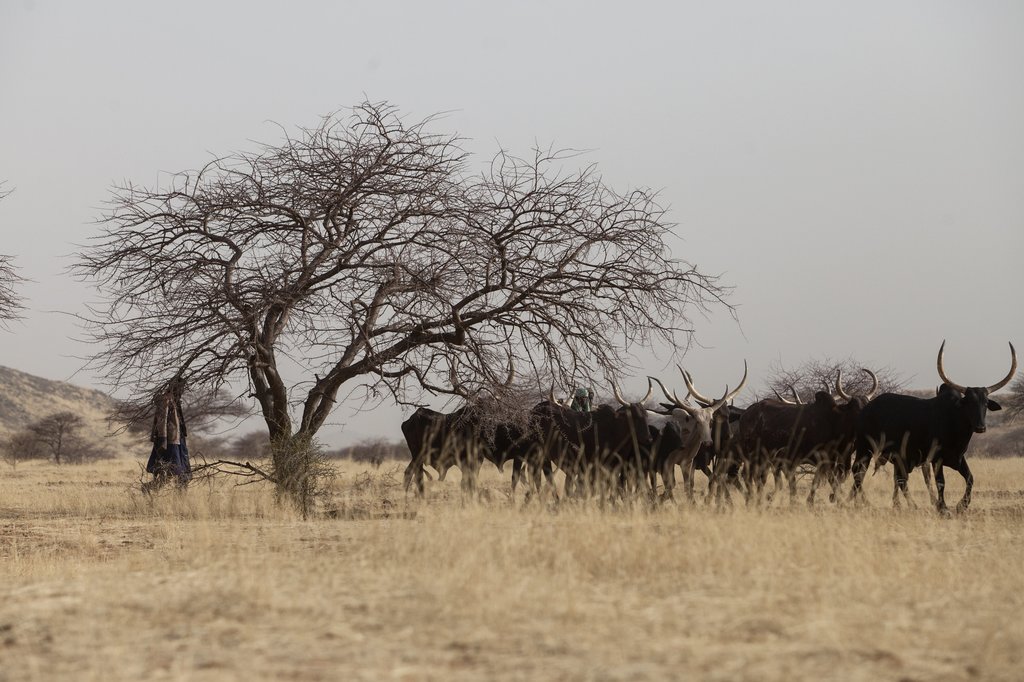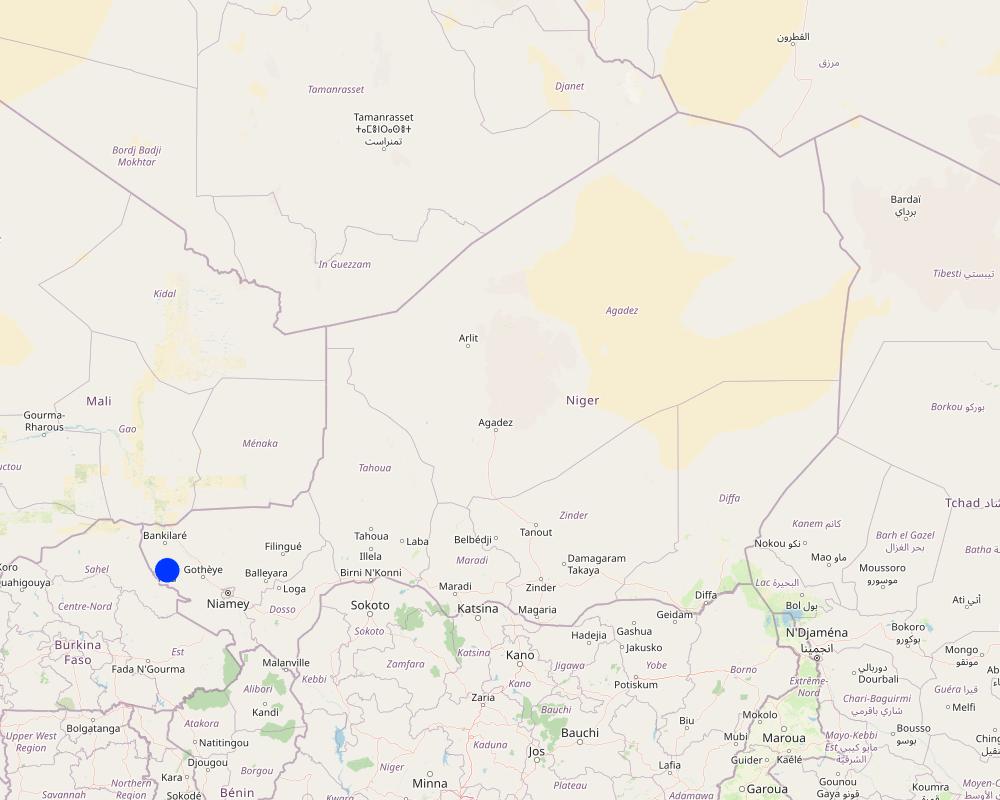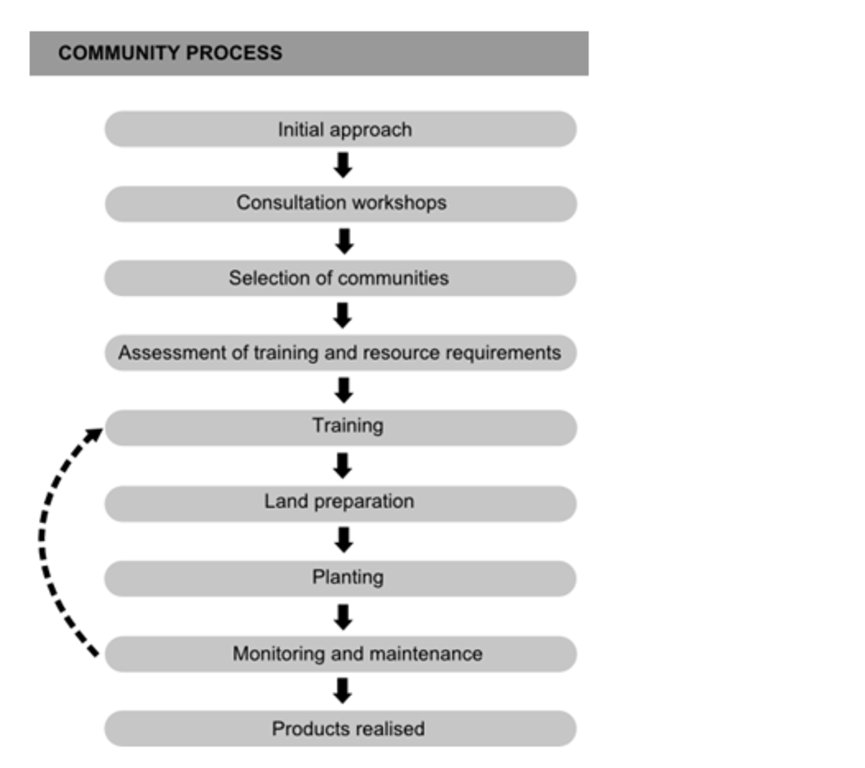Community participation in large-scale land restoration for Africa’s Great Green Wall programme [Нигер]
- Шинийг нээх:
- Шинэчлэх:
- Эмхэтгэгч: Vivian Onyango
- Хянан тохиолдуулагчид: Moctar Sacande, Vivian Onyango
- Хянагчид: Donia Mühlematter, Simone Verzandvoort, Rima Mekdaschi Studer, Joana Eichenberger
approaches_2909 - Нигер
- Бүрэн хураангуйн PDF хувилбар
- Бүрэн хураангуйг PDF-ээр хэвлэх
- Хөтөч дэх бүрэн хураангуй
- Бүрэн хураангуй (форматгүй)
- Community participation in large-scale land restoration for Africa’s Great Green Wall programme: 02 11-р сар 2021 (inactive)
- Community participation in large-scale land restoration for Africa’s Great Green Wall programme: 04 7-р сар 2018 (inactive)
- Community participation in large-scale land restoration for Africa’s Great Green Wall programme : 13 5-р сар 2018 (inactive)
- Community participation in large-scale land restoration for Africa’s Great Green Wall programme : 26 4-р сар 2018 (inactive)
- Community participation in large-scale land restoration for Africa‘s Great Green Wall programme in Niger.: 24 4-р сар 2018 (inactive)
- Community participation in large-scale land restoration for Africa’s Great Green Wall programme: 21 8-р сар 2024 (public)
Бүлгүүдийг үзэх
Бүгдийг дэлгэх Бүгдийг хаах1. Ерөнхий мэдээлэл
1.2 Арга барилыг баримтжуулах болон үнэлгээ хийхэд оролцсон хүн эсвэл байгууллагын холбоо барих хаяг
ГТМ мэргэжилтэн:
Sacande Moctar
moctar.sacande@fao.org
Forestry Policy and Resources Division (FOA)
Итали
Арга барилыг баримтжуулах/үнэлэх ажилд дэмжлэг үзүүлсэн төслийн нэр (шаардлагатай бол)
FAO-Action Against DesertificationАрга барилыг баримтжуулах/үнэлэх ажилд дэмжлэг үзүүлсэн төслийн нэр (шаардлагатай бол)
Book project: Guidelines to Rangeland Management in Sub-Saharan Africa (Rangeland Management)Арга барилыг баримтжуулах/үнэлэх ажилд дэмжлэг үзүүлсэн байгууллага(ууд)-ын нэр (шаардлагатай бол)
Food and Agriculture Organization of the United Nations (FAO) - Итали1.3 WOCAT-аар баримтжуулсан өгөгдлийг ашиглахтай холбоотой нөхцөл
Эмхэтгэгч болон гол мэдээлэгч хүн(хүмүүс) WOCAT аргачлалаар баримтжуулсан мэдээллийг ашиглахтай холбоотой нөхцлийг хүлээн зөвшөөрсөн:
Тийм
2. ГТМ Арга барилын тодорхойлолт
2.1 Арга барилын товч тодорхойлолт
The Food and Agriculture Organization of the United Nations (FAO) has been using a participatory approach to implement large-scale restoration of degraded land in the Sahel. Communities have been central to the programme. In the framework of the Great Green Wall initiative, adapted and useful native tree species, shrubs, and fodder grasses are planted in agro-sylvo-pastoral land. This is response to community needs and preferences while ensuring that the species and varieties are all ecologically suitable.
2.2 Арга барилын дэлгэрэнгүй тодорхойлолт
Арга барилын дэлгэрэнгүй тодорхойлолт:
The approach is implemented under FAO's Action against Desertification (AAD) programme in the Great Green Wall for the Sahara and the Sahel Initiative (GGWSSI). This is Africa's flagship initiative to combat the effects of climate change and desertification, and to address food insecurity and poverty. It brings together more than 20 African countries with international agencies, research institutes, civil society and grassroots organizations. Through the GGWSSI, the vision is a mosaic of sustainable land use practices and productive landscapes stretching across North Africa, the Sahel and the Horn.
Community participation in the Great Green Wall restoration initiative is through a people-centred approach to rangeland management that puts communities at the heart of efforts. It focusses on plant species that support their livelihoods. Specifically these are a selection of well-adapted indigenous trees, shrubs and fodder grasses with proven resilience to drought and usefulness in restoration. Village communities decide on which areas to plant and on the species that they can utilise for food, for fodder, and for medicines. There are also plants that produce economically valuable goods for local, national and even international markets, such as gum arabic (from Acacia senegal) for example.
Technically, AAD supports the implementation of land restoration activities through provision of equipment, and by strengthening the technical and functional capacities of individuals, communities, and organizations in restoration techniques and sustainable land management.
The three main objectives of this approach are:
a) Poverty alleviation;
b) Ending hunger; and
c) Improving resilience to climate change.
The restoration approach is based on a five-step model:
• Communities: needs and requirements for restoration are determined through in-depth consultations with communities.
• Research: good quality seed is made available for the propagation of economically viable, locally adapted and biodiverse vegetation.
• Operational procedure: efficient operational restoration processes are ensured, including land preparation and management, assisted natural regeneration and planting.
• Monitoring: field performance of species are evaluated, as well as communal activities such as maintenance and management of restored areas.
• Capacity development: village technicians’ capacities are upgraded in forest seed collecting and nursery techniques, planting, maintenance and management of restored areas, and development of plant products, marketing, and local business management.
2.3 Арга барилын зурагууд
Гэрэл зурагтай холбоотой ерөнхий тэмдэглэл:
The photos were taken under the FAO project GCP/INT/157/EC: Action Against Desertification is an initiative of the African, Caribbean and Pacific Group of States (ACP) to promote sustainable land management and restore drylands and degraded lands in Africa, the Caribbean and the Pacific, implemented by FAO and partners with funding from the European Union in the framework of the 10th European Development Fund (EDF).
2.4 Арга барилын бичлэгүүд
Тайлбар, товч тодорхойлолт:
https://www.youtube.com/watch?v=qVcMSeXZnJI
Over the next decade, 50 million people may be displaced by desertification - the result of climate change and the depletion of natural resources. Action Against Desertification, an initiative of the African, Caribbean, and Pacific Group of States is implemented by the Food and Agriculture Organization of the United Nations with the financial contribution of the European Union. It aims to restore the productivity of degraded forests and landscapes and enhance the resilience of people to climate change in 6 Great Green Wall countries in Africa as well as Haiti in the Caribbean and Fiji in the Pacific.
Огноо:
02/12/2015
Байршил:
Rome
Зураглаачийн нэр:
© FAO
Тайлбар, товч тодорхойлолт:
https://www.youtube.com/watch?v=prl1eaSvQCQ&feature=youtu.be
Land restoration in the Sahel is making degraded areas productive again, providing economic opportunities in a region where migration has become a tradition. Under FAO’s “Action Against Desertification” programme, these efforts are being expanded to six African countries. Land degradation around the Sahara is not yet irreversible.
Огноо:
18/07/2016
Байршил:
Rome
Зураглаачийн нэр:
© FAO
2.5 Арга барил нэвтрүүлсэн улс орон / бүс нутаг / байршил
Улс:
Нигер
Улс/аймаг/сум:
Tillabery, Dosso and Tahoua
Байршлын дэлгэрэнгүй тодорхойлолт:
In Niger, the GGWSSI covers all the eight regions of the country. Currently FAO’s Action Against Desertification project works in the three regions of Tillabery, Dosso and Tahoua, though the approach is expanding to the remaining five regions.
Тайлбар:
The AAD land restoration approach has been successfully implemented with trans-boundary interventions in Niger, Burkina Faso, and Mali. For this documentation, the focus is on Tera, Niger.
Map
×2.6 Арга барилыг эхлэх, дуусах огноо
Эхлэх жилийг тэмдэглэ:
2013
Хэрэв арга барилыг хэрэгжүүлэх жил тодорхойгүй бол ойролцоогоор эхлэх огноог зааж өгнө үү:
<10 жилийн өмнө (саяхны)
2.7 Арга барилын төрөл
- төсөл / хөтөлбөр дээр үндэслэсэн
2.8 Арга барилын үндсэн зорилго, зорилтууд
Key elements and aims of this approach include:
• Planting the right species in the right place.
• Promoting the use of quality native forest and fodder seeds for restoration.
• Ensuring that a wide range of useful plant species is made available.
• Managing natural regeneration of species and planted areas through village management committees.
• Updating a species database for gene-pool traceability, monitoring, reporting and for future uses of data and information.
2.9 Арга барилын хүрээнд хэрэгжсэн Технологи/Технологиудад дэмжсэн эсвэл саад учруулсан нөхцлүүд
нийгэм / соёл / шашны хэм хэмжээ, үнэт зүйлс
- Идэвхижүүлэх
The approach is people-centred, and builds on traditional management of land, traditional ecological knowledge and techniques such as “half-moons” (demi-lunes in French) for rainwater harvesting that facilitate improved plant establishment.
санхүүгийн нөөц, үйлчилгээний хүртээмж / боломж
- Идэвхижүүлэх
Individuals can acquire finance to buy seeds. On community land, finance may be needed to lease land for production of plant varieties, or for hiring labour to take care of seedlings.
Бүтэц зохион байгуулалт
- Идэвхижүүлэх
Better organization at local level enhances community participation and commitment to achieve interventions at large-scale/community level.
талуудыг хамтын ажиллагаа/зохицуулалт
- Идэвхижүүлэх
There are various levels of collaboration needed for example in establishing which land should/ can be used, in seed selection based on defined needs, and also for the provision of labor. Fundamentally, collaboration is key to agreements to achieve the desired objectives.
Хууль, эрхзүйн хүрээ (газар эзэмшил, газар, ус ашиглах эрх)
- Идэвхижүүлэх
Securing access rights to land and water resources is a motivation for investing in reforestation.
Бодлогууд
- Идэвхижүүлэх
National level policies can protect and ensure supply of seeds as well facilitate access to natural resources such as land. Additionally, policies such as those in support of Great Green Wall activities create an enabling environment within which these activities can be supported.
Газрын засаглал (шийдвэр гаргах, хэрэгжүүлэх, шаардлага)
- Идэвхижүүлэх
Similar to legal framework above.
ГТМ-ийн талаарх мэдлэг, техникийн дэмжлэг авах боломж
- Идэвхижүүлэх
Knowledge around SLM contributes to maintenance and management of restored areas, thus ensuring sustainability of activities. The programme has integrated existing/traditional SLM activities such as zaï (wide planting pits)/half-moons in capturing, concentrating and storing water thus keeping soils moist and improving the chances of good plant growth in a very dry environment.
зах зээл (материал худалдан авах, бүтээгдэхүүн борлуулах), үнэ
- Идэвхижүүлэх
Market access and increasing economic capacities of communities can enable active involvement in restoration especially when plant products can earn income thus facilitating local business.
ажлын багтаамж, хүн хүчний нөөц бололцоо
- Идэвхижүүлэх
Availability of labor facilitates activities such as forest seed collecting, nursery activities, planting, maintenance and management of restored areas. Most of the work is done by women who prepare the land and take the lead in planting.
3. Оролцогч талуудын оролцоо ба үүргүүд
3.1 Арга барилд оролцогч талууд болон тэдгээрийн үүргүүд
- Орон нутгийн газар ашиглагч / орон нутгийн иргэд
Total project beneficiaries are currently 116,000 people (over half are women) Age varies from 15 to 70 years. Participants are villagers including farmers, herders, traditional healers and herbalists. Each intervention village has a village management committee set up for GGW implementation. They contribute land and labour, and village technicians are trained in large-scale degraded land restoration techniques so that they can be self-sufficient at the end of the funding.
1. Defining needs, preferences of species and objectives for land restoration in degraded areas. 2. Trained in the collection of seeds and in how to produce seedlings in village nurseries. 3.The communities involved also participated in the regular monitoring and evaluation of plots. 4. Participating in workshops including agreeing on work plans 5. Communities were also a source of rich traditional ecological knowledge 6. Supporting projects through in-kind contributions of labour and land 7. Representation in the steering committee
- олон нийтэд түшиглэсэн байгууллагууд
Each intervention village has a village management committee set up for GGWSSI activities.
- Contributed land, labor and village technicians to be trained in large-scale land restoration techniques geared to self-sufficiency at the end of project life. Managing intervention sites including products such as fodder. Collaborating with national and local administrations.
- ГТМ-ийн мэргэжилтэн/ хөдөө аж ахуйн зөвлөх
Support in identification of land needed for restoration, seeds, and management of restoration.
- Судлаачид
National seed centres.
1. Address the availability of good quality seeds for collection.
2. Ensure genetic diversity reflecting varieties of native species.
- ТББ
Local NGOs and CBOs.
Local NGO's were trained in land restoration activities.
NGOs were also instrumental in discussions on scaling up the approaches and policy support for mainstreaming sustainable land management.
- Хувийн хэвшил
Supplies of equipment and materials needed for restoration activities.
Mainly business related to procurement of goods and services.
- Орон нутгийн захиргаа
Local administration and national governments in the respective countries.
1. Provide technical management and management of the operational team.
2. Mobilization of communities.
3. Part of the steering committee.
- Засгийн газар (шийдвэр гаргагч, төлөвлөгч)
1. Ministry of Environment and Sustainable Development.
2. National Agency of the Great Green Wall.
3. National Forestry Seed Centre.
4. Local authorities (i.e.Town halls/ Mairies in French) involved in Tillabery, Dosso and Tahoua regions.
- Олон улсын байгууллага
Royal Botanical Garden, Kew.
Technical support; botanical knowledge and information resources, and identifying priority species for the Great Green Wall.
3.2 Арга барилын янз бүрийн үе шатанд орон нутгийн газар ашиглагчид / бүлэглэлүүдийг татан оролцуулах
| Орон нутгийн газар ашиглагч / орон нутгийн иргэдийн оролцоо | Хэн оролцсоныг тодорхойлж, үйл ажиллагааг тайлбарлана уу | |
|---|---|---|
| санаачлага/идэвхжүүлэлт | интерактив | Communities’ local knowledge, needs and aspirations were the backbone of the project. Communities were extensively consulted on species identification and prioritization based on needs, including speed of production, personal knowledge and aspirations. This was through questionnaires and village workshops. Commitment and buy-in from the community was also a prerequisite for activities to start, as they had to commit to contribute land and in-kind labour. Selection of villages for restoration was based on, amongst other things, motivation and commitment by communities to participate in restoration activities, and community-based structures and organizations. |
| Төлөвлөгөө | интерактив | Extensive planning was done with communities before implementation, e.g. to agree on planting times, use of traditional techniques and land preparation. |
| Хэрэгжилт | интерактив | Implementation was done actively with communities who volunteered traditional knowledge as well as labour to the activities. This built on the initial procedures where species were selected and prioritized; planning of activities; and later labour in preparation of land, setting-up nurseries and transplanting. |
| Мониторинг/ үнэлгээ | интерактив | Monitoring and field data collection of survival and growth of seedlings were carried out by trained village technicians in collaboration with the communities and technical institutions. |
3.3 Диаграм (хэрэв боломжтой бол)
3.4 ГТМ-ийн технологи/технологиуд сонгох шийдвэр
Хэрэгжүүлэх Технологи/Технологиудын сонголтыг хийж шийдвэр гаргасан хүнийг тодорхойлно уу:
- оролцооны зарчмын хэсэг болох бүх холбогдох талууд
Тайлбар:
This is a local initiative that uses traditional ecological knowledge and multi-purpose plant species (of known benefits to the local communities) for restoration.
Community participation, lifestyles and preferences and a careful analysis of ecological landscapes are carefully considered and then matched to suitable interventions. This similar approach has been applied by other projects in the GGWSSI region however although has not often been formally disseminated to wider audiences.
Шийдвэрийг юунд үндэслэн гаргасан:
- ГТМ-ийн мэдлэгийг баримтжуулалтын үнэлгээ (нотолгоонд суурилсан шийдвэр гаргах)
- Судалгааны үр дүн, ололтууд
- Хувь хүний туршлага ба санал бодол (баримтжуулаагүй)
4. Техникийн дэмжлэг, чадавхи бүрдүүлэх, мэдлэгийн менежмент
4.1 Чадавхи бэхжүүлэх/сургалт
Газар эзэмшигчид / бусад оролцогч талуудад сургалт явуулсан уу?
Тийм
Хэн сургалтанд хамрагдсан бэ:
- Газар ашиглагчид
- хээрийн ажилтан / зөвлөх
Хэрэв шаардлагатай бол хүйс, нас, яс үндэс, гэх мэт. нэмнэ үү:
100 small-scale farmers were trained in 2017, in Natural Assisted Regeneration techniques and 40 farmers were trained in forest and fodder seed collection and the production of seedlings in village nurseries and in the management of planted sites.
Сургалтын хэлбэр:
- курс дамжаа
Хамрагдсан сэвдүүд:
Technical training was provided to villages through formal modules in how to collect quality seeds in defined seed zones. The training was provided by the national forest seed centres. The training was in seedling production and participatory forest management. Other areas covered included; added-value and the development of plant products (non-timber forest products), marketing and local business management to support income generation.
Тайлбар:
Apart from the restoration technical areas covered above, additional areas of training included; improving adult literacy, family health and nutritional standards. This was done together with specialized rural sector developers.
4.2 Зөвлөх үйлчилгээ
Газар ашиглагчдад зөвлөх үйлчилгээ авах боломжтой байдаг уу?
Тийм
Зөвлөх үйлчилгээ үзүүлсэн эсэхийг тогтоо:
- Газар ашиглагчийн талбай дээр
- Тогтмол төвд
- workshops
Тодорхойлолт / тайлбар:
To re-introduce plants for large-scale restoration, effective use of seeds of wild species demands sufficient biological and technical knowledge about a large number of species to allow for collection, storage and germination of seeds and establishment of seedlings. In this approach therefore, use was made of the technical know-how of RBG Kew and their partnership with forest seed centres that guided collection of quality seeds.
4.3 Институцийг бэхжүүлэх (байгууллагын хөгжил)
Арга барилаар дамжуулан институц байгуулагдаж эсвэл бэхжсэн үү?
- Тийм, маш их
Байгууллагууд бэхжиж, үүсэн бий болсон түвшин(үүд)-г тодорхойлно уу:
- Орон нутгийн
- Бүс нутгийн
- Үндэсний
Байгууллага, үүрэг, хариуцлага, гишүүд гэх мэтийг тайлбарлах:
Institutions: National government; NGOs, CBOs.
Support to the national government which is the national agency for the GGW is the entry point. Through them and based on national objectives, the project progresses to a decentralized level. At the national level, capacities have been improved on monitoring and evaluation techniques; seed identification and selection and handling.
Local level: these are the implementing partners and work on the ground. Their capacities have been improved on seed selection and restoration techniques, and on data collection
Regional level: more collaboration, coordination and knowledge sharing on the GGW initiatives as well as peer-to-peer learning.
Дэмжлэгийн төрлийг ялга:
- Санхүүгийн
- чадавхи бэхжүүлэх / сургалт
- Тоног төхөөрөмж
Дэлгэрэнгүй мэдээллийг өгнө үү:
Equipment: mainly for land preparation for planting and non-timber forest product processing.
4.4 Мониторинг ба үнэлгээ
Мониторинг болон үнэлгээ нь арга барилын хэсэг үү?
Тийм
Тайлбар:
Regular monitoring is carried out by village communities involved in the restoration exercise. The activities include assessing seedling survival and growth, and the area planted.
Хэрэв тийм бол энэ баримт бичиг нь мониторинг, үнэлгээнд ашиглагдахаар зориулагдсан уу?
Үгүй
4.5 Судалгаа
Судалгаа арга барилын хэсэг нь байсан уу?
Тийм
Сэдвийг тодруулна уу:
- Социологи
- Эдийн засаг/ зах зээл
- Экологи
Дэлгэрэнгүй мэдээллийг өгч, хэн судалгаа явуулсныг бичнэ үү:
Through a questionnaire, communities define their needs and preferences for species, and the objectives of land restoration in their selected agro-sylvo-pastoral degraded lands. Results of this consultation are fed back to them after analyses by the project team (researchers, plant experts, seed centres) for the feasibility, suitability and availability of the requested species. This creates common agreement on interventions, priorities and implementation plans, with roles and responsibilities from the communities as well as from the technical teams.
1. Sociology: prior research was done on social diversity of village communities in areas such as gender, age, and professions to decide on village selection, but also to ensure balance.
2. Economics/marketing: this was multi-faceted - on the one hand looking at community economic needs and priorities, but also on how to add value to non-timber forest products. The plant-use data received from respondents were classified according to the Economic Botany Data Collection.
These helped in deciding and prioritizing species according to community needs.
3. Ecology: the GGW initiative is typically aimed at drylands with challenges of aridity. Thus the ecology was studied to identify suitable plant species that would thrive under these conditions - in combination with traditional SLM/ water harvesting technologies that have been developed to overcome moisture deficits.
The selected species was further examined in laboratories to check their suitability for dryland environments and thereafter to ensure good quality and genetically diverse seeds are used.
5. Санхүүгийн болон гадаад материаллаг дэмжлэг
5.1 ГТМ-ийн Арга барилын бүрэлдэхүүн хэсгийн жилийн төсөв
Хэрэв жилийн төсөв тодорхойгүй бол хягаарыг тодруулна уу:
- 100,000-1,000,000
Тайлбар (жнь: санхүүжилтийн гол эх үүсвэр / гол хандивлагчид):
Action Against Desertification is implemented by FAO and partners with funding from the European Union in the framework of the 10th European Development Fund (EDF). The GGWI under AAD in Niger is funded up to around 1.5m USD for the four years of the project.
5.2 Газар ашиглагчдад санхүүгийн / материаллаг дэмжлэг үзүүлсэн
Технологи / технологийг хэрэгжүүлэхэд газар ашиглагчид санхүүгийн / материаллаг дэмжлэг авсан уу?
Тийм
Хэрэв тийм бол дэмжлэгийн төрөл(үүд), нөхцөл, болон нийлүүлэгч(чид) бичнэ үү:
Finances are needed for purchasing equipment; seeds were also provided; seed testing was carried out to establish appropriate type/species of those chosen by the communities.
5.3 Тодорхой зардлыг даахад чиглэсэн дэмжлэгт (хөдөлмөрийн хүчийг оролцуулаад)
- Ажил хөдөлмөр
| Ямар талбайн хэмжээнд | Тэтгэмж, урамшууллыг тодорхойлно уу |
|---|---|
| хэсэгчлэн санхүүждэг | Local communities shared some tasks such as during planting period the project provided lunch. |
- Тоног төхөөрөмж
| Ямар хөрөнгө оруулалт татаасаар олгогдсоныг заана уу | Ямар талбайн хэмжээнд | Тэтгэмж, урамшууллыг тодорхойлно уу |
|---|---|---|
| машин төхөөрөмж | хэсэгчлэн санхүүждэг | Provided such as hand tools, and carts for transportation. |
| Багажууд | хэсэгчлэн санхүүждэг | Tools for SLM/WH structures and planting. |
- Хөдөө аж ахуй
| Ямар хөрөнгө оруулалт татаасаар олгогдсоныг заана уу | Ямар талбайн хэмжээнд | Тэтгэмж, урамшууллыг тодорхойлно уу |
|---|---|---|
| Үр, үрсэлгээ | хэсэгчлэн санхүүждэг | Training was provided in a collection of native forest seeds that were then bought from them (communities thus earning an income). |
| Organic manure | Training to do and collect composts. | |
- Барилга байгууламж
| Ямар хөрөнгө оруулалт татаасаар олгогдсоныг заана уу | Ямар талбайн хэмжээнд | Тэтгэмж, урамшууллыг тодорхойлно уу |
|---|---|---|
| Чулуу | хэсэгчлэн санхүүждэг | For storage facilities. |
Хэрэв газар ашиглагчийн хөдөлмөрийн хүч чухал байсан бол энэ нь аль хэлбэр байсан:
- бусад материаллаг дэмжлэгээр шагнагдсан
Тайлбар:
In partnership with WFP there was collaboration on food for assets and incentives from the project such as trainings on preparation of vegetable gardens..
5.4 Кредит
Арга барилын хүрээнд ГТМ-ийн үйл ажиллагаанд зориулж зээлд хамрагдсан уу?
Үгүй
5.5 Бусад урамшуулал, хэрэгсэл
ГТМ-ийн технологийг хэрэгжилтийг дэмжихэд ашигласан бусад урамшуулал, хэрэгсэл байсан уу?
Тийм
Хэрэв тийм бол, тодруулна уу:
Functional capacity building village communities for example in management of restoration sites and development of forest products
6. Нөлөөллийн дүн шинжилгээ ба дүгнэлт
6.1 Арга барилын нөлөөллүүд
Арга барил нь орон нутгийн газар ашиглагчдыг чадваржуулах, оролцогч талуудын оролцоог сайжруулсан уу?
- Үгүй
- Тийм, бага зэрэг
- Тийм, зарим
- Тийм, их
The project supports communities to improve the productivity of their land in direct consultation with them while benefiting from training on recording changes in the diversity of biomass in community plots and lands.
Арга барил нь нотолгоонд суурилсан шийдвэр гаргах боломж олгосон уу?
- Үгүй
- Тийм, бага зэрэг
- Тийм, зарим
- Тийм, их
Арга барил нь ГТМ-ийн технологийг хэрэгжүүлж, хадгалахад газар ашиглагчдад тусласан уу?
- Үгүй
- Тийм, бага зэрэг
- Тийм, зарим
- Тийм, их
Training was provided in various aspects such as seed selection and collection.
Арга барил нь ГТМ-ийн зардал хэмнэсэн хэрэгжилт, зохицуулалтыг сайжруулсан уу?
- Үгүй
- Тийм, бага зэрэг
- Тийм, зарим
- Тийм, их
The project is not funding all aspects, though building sustainability through the direct capacity development and participation of communities.
Арга барил нь ГТМ-ийн хэрэгжилтийн санхүүгийн эх үүсвэрийн хүртээмжийг сайжруулах / эргэлтэнд оруулахад чиглэсэн үү?
- Үгүй
- Тийм, бага зэрэг
- Тийм, зарим
- Тийм, их
1. Village technicians have been used by other projects in the area in SLM and also by the government while receiving remuneration. 2. Communities are able to sell indigenous seeds for restoration to other projects in the region, and to the government.
Арга барил нь ГТМ хэрэгжүүлэхэд газар ашиглагчдын мэдлэг, чадварыг сайжруулахад хүргэсэн үү?
- Үгүй
- Тийм, бага зэрэг
- Тийм, зарим
- Тийм, их
Энэ арга барил бусад сонирхогч талуудын мэдлэг, чадавхийг сайжруулсан уу?
- Үгүй
- Тийм, бага зэрэг
- Тийм, зарим
- Тийм, их
1. Governments; training of technicians in specialized tools, training in monitoring and evaluation of SLM and in restoration impacts. 2. CBOs and local administrations: regional organizations such as CILSS-Agryhmet were also trained in the above.
Арга барил нь оролцогч талуудын хооронд институци, хамтын ажиллагааг бий болгож, бэхжүүлсэн үү?
- Үгүй
- Тийм, бага зэрэг
- Тийм, зарим
- Тийм, их
The village technicians and trained seed collectors have now been organized into a regional union for supply of restoration seed.
Энэ арга барил зөрчилдөөнийг багасгасан уу?
- Үгүй
- Тийм, бага зэрэг
- Тийм, зарим
- Тийм, их
With the increasing of fodder production, pressures on other grazing areas have gone slightly down.
Disadvantaged groups not present at village level.
Арга барил нь жендэрийн тэгш байдлыг сайжруулж, эмэгтэйчүүд, охидыг чадавхжуулсан уу?
- Үгүй
- Тийм, бага зэрэг
- Тийм, зарим
- Тийм, их
Yes; gender equality is taken into consideration – for example, women are represented in each village management community.
Арга барил нь газар ашиглагч залуучууд / дараагийн үеийн хүмүүсийг ГТМ-д оролцохыг хөхүүлэн дэмжсэн үү?
- Үгүй
- Тийм, бага зэрэг
- Тийм, зарим
- Тийм, их
As income comes in from restoration activities, it has encouraged young people to consider SLM as an income generating opportunity.
Арга барил нь ГТМ-ийн технологийг хэрэгжүүлэхэд саад учруулсан газрын эзэмшил / ашиглах эрхийг сайжруулахад чиглэсэн үү?
- Үгүй
- Тийм, бага зэрэг
- Тийм, зарим
- Тийм, их
Communities now see more value in restoring degraded land previously neglected and there are tenure agreements with local administration. Land tenure had been insecure for local communities, but now rights of access and use have been delivered by local administrations to local communities, guaranteeing that restoration areas belong to communities - thus ensuring sustainability, as a community perceives ownership of the investments.
Арга барил нь чанаржуулсан шим тэжээл/ хүнсний аюулгүй байдалд хүргэсэн үү?
- Үгүй
- Тийм, бага зэрэг
- Тийм, зарим
- Тийм, их
1. Farming in restored areas allows for more crop production. 2. Fodder production is feeding livestock better improving production of milk and meat.
Арга барил нь зах зээлийн хүртээмжийг сайжруулсан уу?
- Үгүй
- Тийм, бага зэрэг
- Тийм, зарим
- Тийм, их
1. Seeds and fodder are being sold by local communities to other projects, governments and communities.
Арга барил нь ус, ариун цэврийн байгууламжийн хүртээмжийг сайжруулахад хүргэсэн үү?
- Үгүй
- Тийм, бага зэрэг
- Тийм, зарим
- Тийм, их
not applicable.
Арга барил нь эрчим хүчний эх үүсвэр/ илүү тогтвортой ашиглалтад хүргэх үү?
- Үгүй
- Тийм, бага зэрэг
- Тийм, зарим
- Тийм, их
not applicable.
Арга барил нь газар ашиглагчид уур амьсгалын өөрчлөлтөд дасан зохицох чадварыг дээшлүүлж, уур амьсгалын өөрчлөлттэй холбоотой гамшгийг бууруулах чадавхийг сайжруулсан уу?
- Үгүй
- Тийм, бага зэрэг
- Тийм, зарим
- Тийм, их
The project’s aim is to increase the resilience of natural capital and people living in the drylands while being able to adapt to climate change.
Арга барил нь хөдөлмөр эрхлэлт, орлогын боломжид хүргэсэн үү?
- Үгүй
- Тийм, бага зэрэг
- Тийм, зарим
- Тийм, их
In seed sales, crop production, income earning from employment of technicians.
6.2 ГТМ-ийг хэрэгжүүлэх газар ашиглагчидын гол санаачилга
- үйлдвэрлэл нэмэгдсэн
Increased land productivity from restored land.
- Ашиг нэмэгдсэн (боломж), зардал-үр ашгийн харьцаа сайжирсан
Improved yields and harvest.
- Газрын доройтол буурсан
Restored land provide more opportunities to land users.
- нэр хүнд, нийгмийн дарамт / нийгмийн холбоо
Restoration of agro-sylvo-pastoral systems promoted cohesion across different user groups and provided benefits.
- Сүлжээ/ бүлэг төсөл/ хөдөлгөөнд гишүүнээр элсүүлэх
Desire to be part of community based organization and through these, management of restored lands is also possible.
- Байгаль орчны ухамсар
Improved biodiversity, wildlife and link to community cultures and lifestyles was a motivator.
- зан заншил, ёс суртахуун
Linked to environmental above; need to protect and preserve wildlife and biodiversity.
- ГТМ-ийн мэдлэг, туршлага дээшилсэн
Project provided technical capacity development such as water harvesting and rice species to plant in right places motivated communities to participate.
- зөрчилдөөнийг бууруулах
Increasing biomass in agro-sylvo-pastoral systems reduced conflicts between pastoralists and farmers.
6.3 Арга барилын үйл ажиллагааны тогтвортой байдал
Газар ашиглагчид арга барилаар дамжуулан хэрэгжүүлсэн арга хэмжээг тогтвортой хадгалж чадах уу (гадны дэмжлэггүйгээр)?
- Тийм
Хэрэв тийм бол яаж гэдгийг тайлбарлана уу:
The capacity being developed should help farmers continue without external intervention e.g. training in collecting planting material, planting techniques and in managing the plots enables continuity, and the capacities developed stay within the community – for example: the trained village technicians.
6.4 Арга барилын тогтвортой/давуу тал/боломжууд
| Газар ашиглагчдын тодорхойлсон давуу тал/боломжууд |
|---|
| Builds on existing knowledge such as the use of zaï (pit planting). |
| Income generation e.g. from selling of seeds to governments and other land users. |
| Helping achieve communities specifics objectives such as increasing tree cover. |
| Эмхэтгэгч, бусад мэдээлэл өгсөн хүмүүсийн өнцгөөс тодорхойлсон давуу тал/боломжууд |
|---|
| The consultation process and the mutual trust built over time, which helps people “buy into” the programme and feel ownership of the activities on the ground. |
| The technical and scientific feedback answers to priorities and preoccupation of land users in terms of restoration objectives. |
| The involvement of people in monitoring and management of their planted sites as they contribute their lands and labour. |
6.5 Арга барилын дутагдалтай/сул тал/аюул болон тэдгээрийн хэрхэн даван туулах арга замууд
| Газар ашиглагч нарын тодорхойлсон сул тал/ дутагдал/ эрсдэл | Тэдгээрийг хэрхэн даван туулах вэ? |
|---|---|
| Inability to adequately influence donor plans. | Frequent consultations. |
| Эмхэтгэгч, бусад мэдээлэл өгсөн хүмүүсийн өнцгөөс тодорхойлсон сул тал/ дутагдал/ эрсдэл | Тэдгээрийг хэрхэн даван туулах вэ? |
|---|---|
| Inability to address all the needs of the beneficiaries: for example demand for water supply in dry seasons while the project focusses on rainfed restoration. | Increased dialogue on interventions across sectors, such as with donors for a more systematic and integrated approach. |
| Lack of flexibility in implementation to consider some of the upcoming demands of communities. |
7. Суурь мэдээлэл болон холбоосууд
7.1 Мэдээллийн эх үүсвэр/аргууд
- Хээрийн уулзалт, судалгаа
7.2 Холбогдох бүтээлийн ишлэл
Гарчиг, зохиогч, он, ISBN:
FAO. 2015. Global guidelines for the restoration of degraded forests and landscapes in drylands: building resilience and benefitting livelihoods. Forestry Paper No. 175. Rome, Food and Agriculture Organization of the United Nations.
Хаанаас авч болох вэ? Зардал?
UN-FAO
Гарчиг, зохиогч, он, ISBN:
Community participation at the heart of Africa’s Great Green Wall Restoration model. Authors: M. Sacande, N. Berahmouni and S. Hargreaves. In Unasylva. Volume 66 2015/3
Хаанаас авч болох вэ? Зардал?
UN-FAO
7.3 Холбогдох мэдээллийн интернет дэх нээлттэй холбоосууд
Гарчиг/ тодорхойлолт:
Action Against Desertification (FAO)
URL:
http://www.fao.org/in-action/action-against-desertification/en/
Гарчиг/ тодорхойлолт:
Building Africa’s Great Green Wall: Restoring degraded drylands for stronger and more resilient communities
URL:
http://www.fao.org/3/a-i6476e.pdf
Гарчиг/ тодорхойлолт:
Forest and Landscape Restoration Approach
URL:
http://www.fao.org/3/a-i5212e.pdf
Холбоос ба модулууд
Бүгдийг дэлгэх Бүгдийг хаахХолбоосууд
Холбоос байхгүй байна
Модулууд
Модуль байхгүй байна


